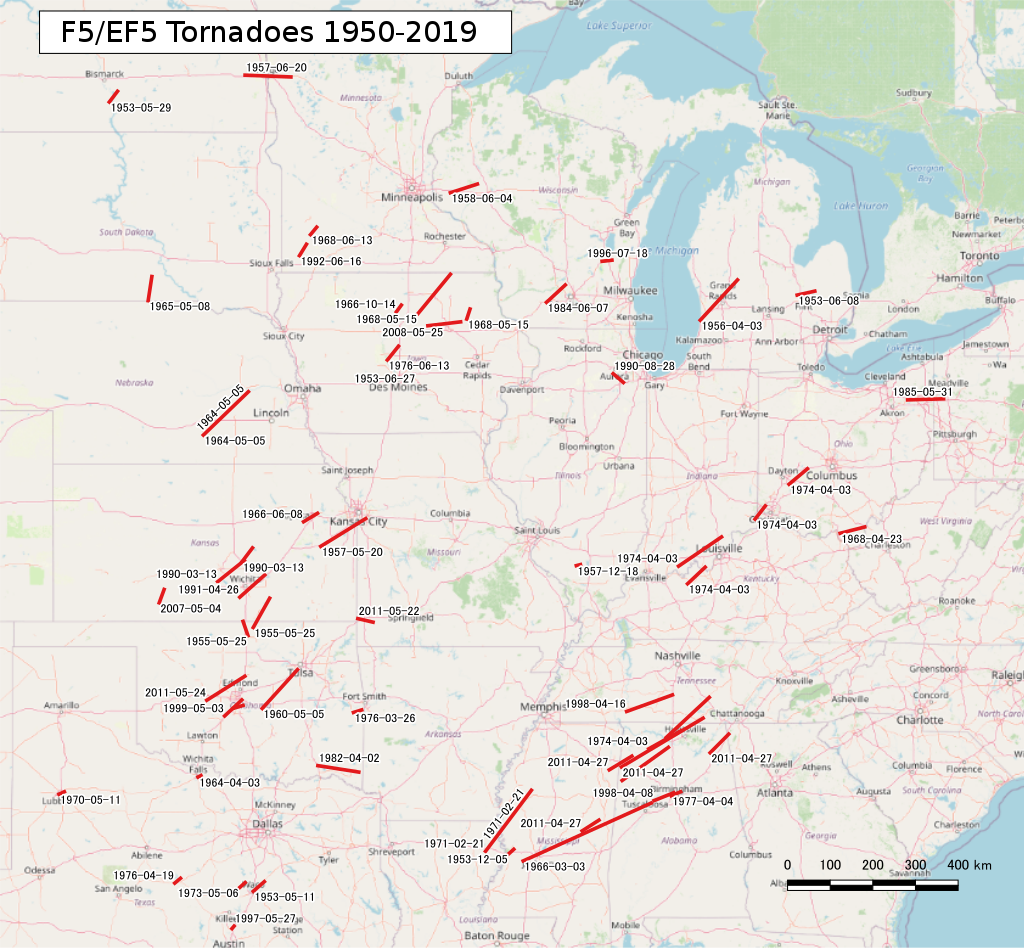Tornadoes are among the most violent weather events on Earth.
Each year, more than 2,000 tornadoes are recorded worldwide, according to the National Oceanic and Atmospheric Administration (NOAA). The large majority of them occur in North America and Europe, with an annual average of 1,245 in the U.S. and more than half of those occurring between April and June.
In order to determine the intensity of tornadoes, scientist Ted Fujita devised a method to estimate maximum wind gusts produced by these storms based on the damage they caused. This became known as the Fujita Scale, or F Scale, introduced in 1971. The scale ranked tornadoes from F0 to F5, F5 being the most intense with estimated winds of 261 to 318 mph.

In the U.S., from 1950 through January 2007, a total of 50 tornadoes were officially rated F5. The ratings of tornadoes that hit prior to 1971, when the F Scale was introduced, were mainly based off damage photos.
Following two particularly devastating tornadoes — Jarrell, Texas, in 1997 and Moore-Oklahoma City, Oklahoma, in 1999 — engineers questioned the reliability of the F Scale. Ultimately, scientists came up with a new scale, taking into account 28 different damage indicators based on building design and structural integrity. This became known as the Enhanced Fujita scale, or EF Scale. The scale now estimates EF5 tornado winds as “over 200 mph.” The EF Scale is used mostly in North America.
Between Feb. 1, 2007, and Dec. 31, 2019, nine U.S. tornadoes were officially rated EF5, based on the most recent NOAA data available. Since 1950, only one official F5/EF5 tornado has hit Canada.
So, the U.S. has averaged less than one F5/EF5 tornado per year. Despite their rarity, the 59 that struck the country were extremely deadly, killing 1,347 people. The most fatalities from a single F5/EF5 were 158 in Joplin-Duquesne, Missouri, on May 22, 2011, the deadliest tornado in the U.S. since 1947.
Moore, Oklahoma, was devastated by another EF5 tornado on May 20, 2013, the most recent EF5 in the U.S.
Tornadoes of any magnitude can develop quickly and move at speeds of up to 60 mph. Despite advancements in forecasting, lead times of just 10 to 20 minutes are common for seeking safety once the NWS issues a tornado warning, and truckers don’t want to cross paths with these storms.
Their best defense is using a reliable weather app on mobile devices. If the app is set to GPS or location mode, drivers will receive local tornado and other severe weather alerts no matter where they happen to be along their routes, as long as cell reception isn’t disrupted. Portable NOAA Weather Radios are also available at many electronic stores and large retail stores.
While at home, tabletop NOAA Weather Radios are the best line of defense. They plug into wall outlets but can run on backup batteries. So if the power goes out and cell service crashes, the tabletop radio will still send out lifesaving severe weather warnings with a set of fresh batteries installed.
Click here for more FreightWaves articles by Nick Austin.
You might also like:
Weather tales from the road: Trucker’s storm encounters no joke
19 storms forecast to develop this hurricane season
Disaster relief nonprofits fighting supply shortfalls
